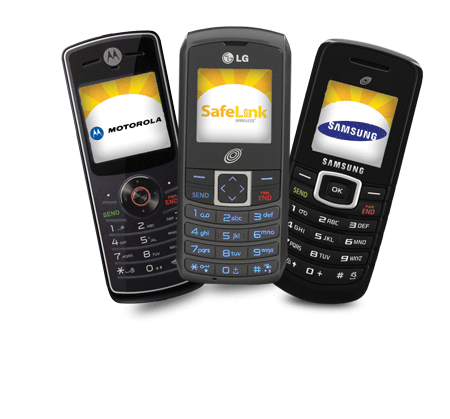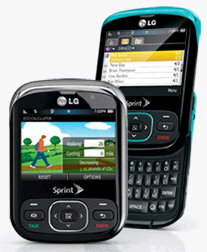Free Phones Biography
Source(google.com.pk)
A mobile phone contains all of the components needed to build a hearing aid. It contains a microphone, a loudspeaker and, in between, all the necessary processing power. Already, it is possible for anyone who owns an internet-connected mobile phone to download simple hearing aid applications (or ‘apps’) at a cost of only a few Euros. Is this a passing fad or the beginning of a hearing aid revolution?
Of course, such apps are less than ideal for many reasons. A mobile phone is expensive, heavy and inconvenient compared to a regular hearing aid. The earphones supplied by the manufacturer are rarely comfortable enough to wear all day. An aid on a mobile phone is almost certainly monaural, because a single microphone and not two are used in headsets. Thus, no localisation cues are offered. The signal processing software is often crude compared to the best commercial aids. Moreover, the user has had no hearing test and has no professional support to help find the best settings. Consequently, the best professional advice must be to ‘stay away’.
But, what about the future? Many of these problems are purely technical and, as we know, modern technology has a habit of solving problems even before the public knows that one exists. Phones get lighter every year. Recently, most of the mobile phone functions that might be used in a hearing aid have been built into lighter and cheaper music players such as the Apple iPod Touch. Comfortable, high-fidelity earpieces are already available for separate purchase. Bluetooth and wireless will soon replace the wires linking the phone to the earpieces and remote microphones are a possibility. Wristwatch-size mobile phones are already available. The problem of changing small batteries with large fingers is already solved because a phone can be charged up overnight simply by dropping it on a charging dock or, even better, using the latest wireless charging solution.
What is more, phones and music players have all the necessary processing power to host automated hearing tests. The results could be relayed automatically to a professional adviser. The advisor could even be a robot who could download over the internet the recommended hearing aid settings. If the advisor is, in fact, a robot, there is no reason why it cannot exist simply as software on the users own equipment. The technical problems will surely be solved.
Cost will also be a factor in encouraging the spread of this kind of aid. Why pay thousands of Euros for a hearing aid when one is available for a few Euros on a mobile phone? More to the point, why should governments pay billions for hearing aids for their citizens when a cheaper alternative exists, particularly if it can be hosted on a device that the patient already owns? A few million Euros invested in refining an alternative based on a mobile phone or music player might be a better use of tax-payers money. It must also be remembered that most of the world’s population has little or no access to decent health-care. They have no access to an audiologist nor could they afford a hearing aid even if one was prescribed. Nevertheless, people in under-developed economies do have access to mobile phones because landline communication systems are so unsatisfactory. Unwanted phones will always be readily available for use by elderly relatives, if not, they will soon be coming by the truckload from the industrialised countries.
Our research group became involved in the development of an ‘aid on a phone’ out of necessity. We had what we thought was a novel design for a hearing aid but there was little chance of having it made up as a conventional hearing aid for a number of reasons. We could test it in the laboratory using a laptop computer but, as outsiders, we were not going to convince a hearing aid manufacturer to adopt it. Such a step would require a considerable financial investment both to convert the design into digital hardware and to resource the marketing and training effort required to persuade dispensers to recommend it. Making a case would be difficult even if our new ideas were a small improvement to an established design. However, we wanted to do something much more radical. It was then that we realised that we could move directly into production using a mobile phone as a portable experimental hearing aid. This would allow us to demonstrate the viability of the concept and learn from the experiences of people all around the world, not just in our laboratory. This is not a new idea and we are aware that many in the industry are alert to the new opportunities that the technology is creating.
From inside our group the initial proposal came from Nick Clark who had recently joined us after finishing his PhD research at the MRC Institute for Hearing Research at Nottingham University. Using his programming expertise, he developed and refined an app suitable for uploading to the iTunes Store. An implementation of our hearing aid algorithm is available for recent iOS devices, i.e. iPhone 4s, iPhone 5 and latest iPod touch via the app store. Download ‘BioAid’ today free of charge.
Free Phones Phone Wallpapers Icon Backgrounds Cases Wallpapers Hd Logo Call Numbers Booth Symbol Images Phones

Free Phones Phone Wallpapers Icon Backgrounds Cases Wallpapers Hd Logo Call Numbers Booth Symbol Images Phones

Free Phones Phone Wallpapers Icon Backgrounds Cases Wallpapers Hd Logo Call Numbers Booth Symbol Images Phones

Free Phones Phone Wallpapers Icon Backgrounds Cases Wallpapers Hd Logo Call Numbers Booth Symbol Images Phones

Free Phones Phone Wallpapers Icon Backgrounds Cases Wallpapers Hd Logo Call Numbers Booth Symbol Images Phones

Free Phones Phone Wallpapers Icon Backgrounds Cases Wallpapers Hd Logo Call Numbers Booth Symbol Images Phones

Free Phones Phone Wallpapers Icon Backgrounds Cases Wallpapers Hd Logo Call Numbers Booth Symbol Images Phones

Free Phones Phone Wallpapers Icon Backgrounds Cases Wallpapers Hd Logo Call Numbers Booth Symbol Images Phones

Free Phones Phone Wallpapers Icon Backgrounds Cases Wallpapers Hd Logo Call Numbers Booth Symbol Images Phones

Free Phones Phone Wallpapers Icon Backgrounds Cases Wallpapers Hd Logo Call Numbers Booth Symbol Images Phones

Its a great pleasure reading your post.Its full of information I am looking for and I love to post a comment that "The content of your post is awesome" Great work.
ReplyDeletecheap smart phones
Acknowledges for paper such a beneficial composition, I stumbled beside your blog besides decipher a limited announce. I want your technique of inscription...
ReplyDeletebest-iphone-7-plus-cases